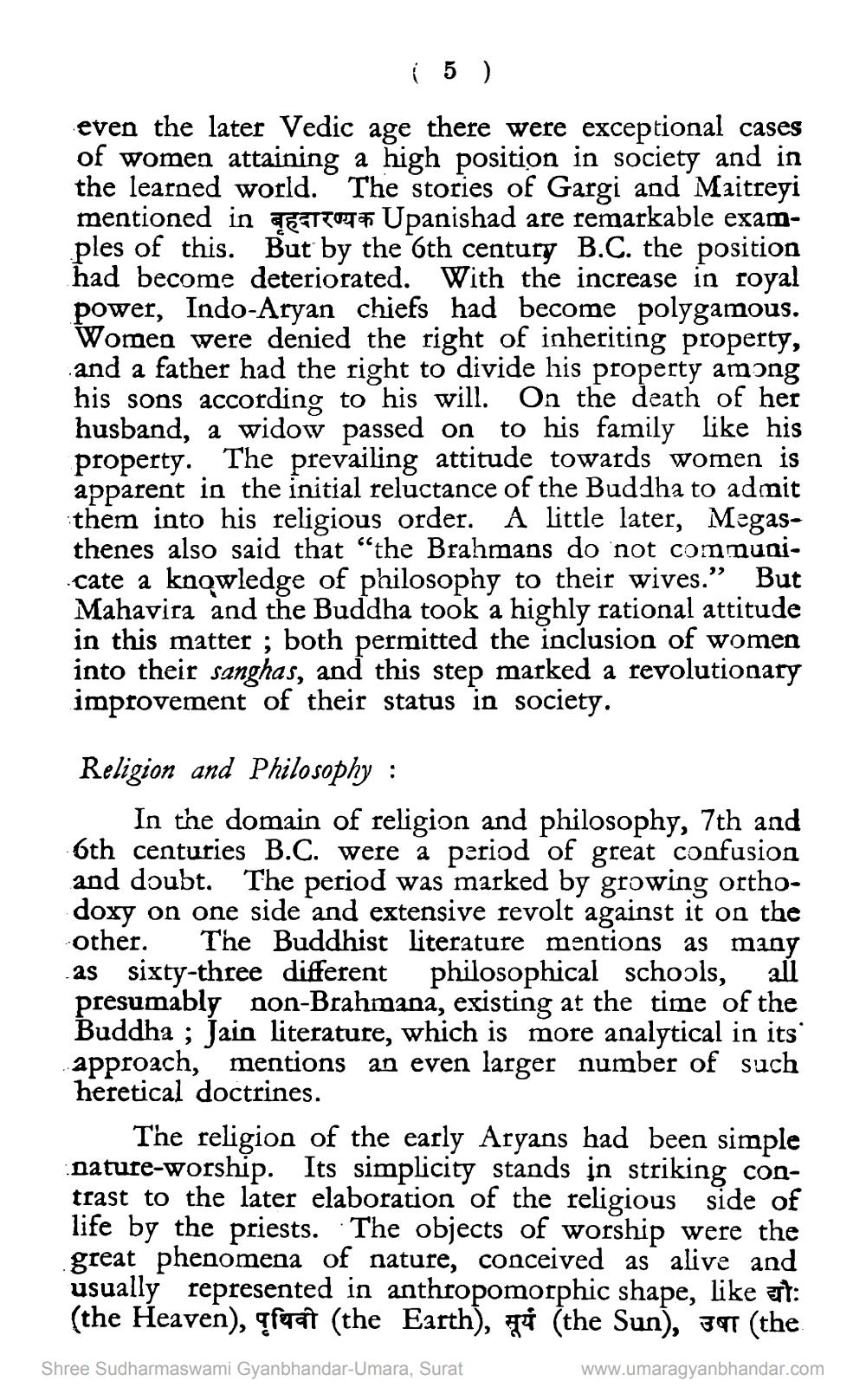________________
(5) even the later Vedic age there were exceptional cases of women attaining a high position in society and in the learned world. The stories of Gargi and Maitreyi mentioned in TETTOTUpanishad are remarkable examples of this. But by the 6th century B.C. the position had become deteriorated. With the increase in royal power, Indo-Aryan chiefs had become polygamous. Women were denied the right of inheriting property, and a father had the right to divide his property amɔng his sons according to his will. On the death of her husband, a widow passed on to his family like his property. The prevailing attitude towards women is apparent in the initial reluctance of the Buddha to admit them into his religious order. A little later, Megasthenes also said that “the Brahmans do not communicate a knowledge of philosophy to their wives.” But Mahavira and the Buddha took a highly rational attitude in this matter ; both permitted the inclusion of women into their sanghas, and this step marked a revolutionary improvement of their status in society.
Religion and Philosophy :
In the domain of religion and philosophy, 7th and 6th centuries B.C. were a period of great confusion and doubt. The period was marked by growing orthodoxy on one side and extensive revolt against it on the other. The Buddhist literature mentions as miny as sixty-three different philosophical schools, all presumably non-Brahmana, existing at the time of the Buddha ; Jain literature, which is more analytical in its approach, mentions an even larger number of such heretical doctrines.
The religion of the early Aryans had been simple nature-worship. Its simplicity stands in striking contrast to the later elaboration of the religious side of life by the priests. The objects of worship were the great phenomena of nature, conceived as alive and usually represented in anthropomorphic shape, like ut:
(the Heaven), पृथिवी (the Earth), सूर्य (the Sun), उषा (the Shree Sudharmaswami Gyanbhandar-Umara, Surat
www.umaragyanbhandar.com




